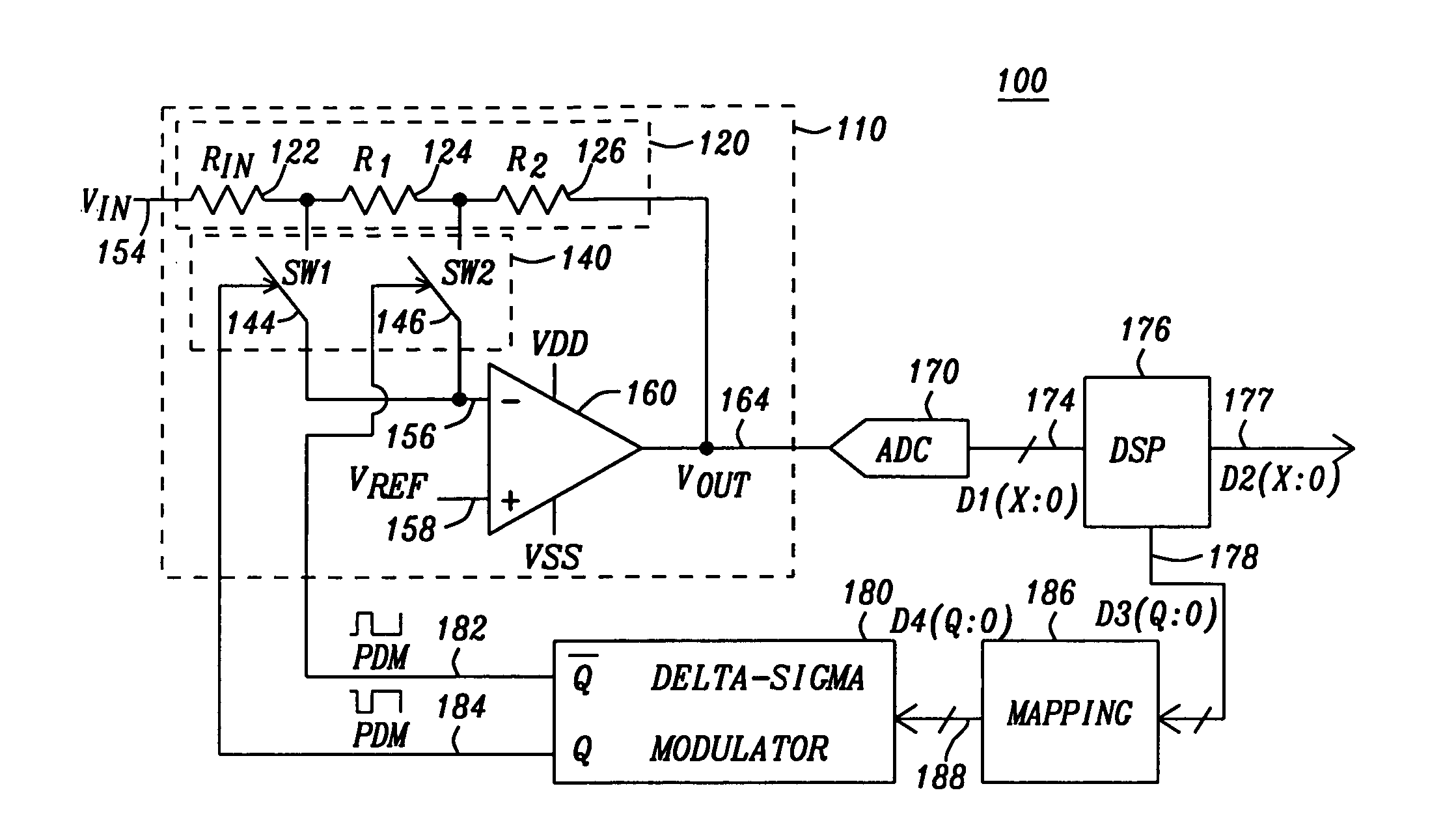Delta-sigma modulator approach to increased amplifier gain resolution
a modulator and delta-sigma technology, applied in the field of variable gain amplifier circuits, can solve the problems of difficult to maintain high quantization precision over a wide-dynamic range, the unit size reduction impairs resistor matching on the integrated circuit, and the potential for large variation of audio input amplitude, etc., to achieve the effect of improving gain resolution and improving gain resolution
- Summary
- Abstract
- Description
- Claims
- Application Information
AI Technical Summary
Benefits of technology
Problems solved by technology
Method used
Image
Examples
Embodiment Construction
[0024]FIG. 1 is a circuit schematic diagram illustrating one example of a variable gain amplifier device 100 in accordance with one embodiment of the invention. The device 100 includes a programmable gain amplifier (PGA) 110, an analog-to-digital converter 170, and a delta-sigma modulator 180. The programmable gain amplifier 110 includes an amplifier 160 having an input 156 and an output 164, and a switchable resistor network 120. The switchable resistor network 120 includes resistors 122, 124, and 126, and switches 144 and 146. The resistor RIN 122, R1 124, and R2 126 are arranged in series from the PGA input VIN 154 to the PGA output VOUT 164. The switches SW1144 and SW2146 arranged between the amplifier input 156 and nodes between the resistors 122, 124, and 126. The amplifier 160 is preferably an operational amplifier with inverting and non-inverting inputs as is known in the art. While a single-ended amplifier is shown, a differential input / output amplifier may alternatively be...
PUM
 Login to View More
Login to View More Abstract
Description
Claims
Application Information
 Login to View More
Login to View More - R&D
- Intellectual Property
- Life Sciences
- Materials
- Tech Scout
- Unparalleled Data Quality
- Higher Quality Content
- 60% Fewer Hallucinations
Browse by: Latest US Patents, China's latest patents, Technical Efficacy Thesaurus, Application Domain, Technology Topic, Popular Technical Reports.
© 2025 PatSnap. All rights reserved.Legal|Privacy policy|Modern Slavery Act Transparency Statement|Sitemap|About US| Contact US: help@patsnap.com



